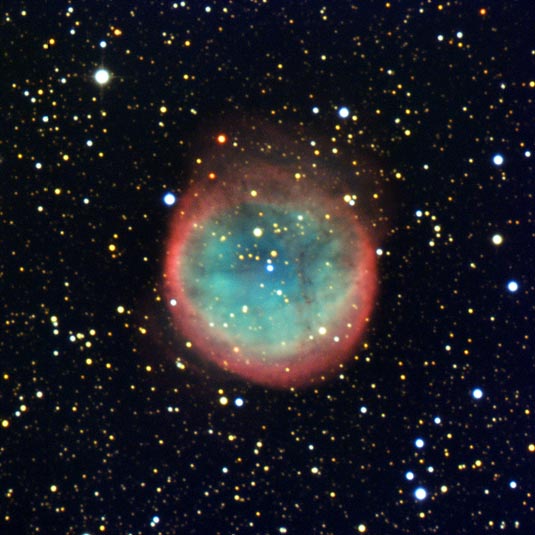
Description: Planetary Nebula
Position(J2000): RA 19hr 18m 28.15s Dec 6° 32' 18.74"
Constellation: Aquila
Distance: 1000- 3000 light-years
Visual Magnitude: 12.5
Angular size: 1.9 x 1.8 arcmin
Image Credit: ESO
Release date: December 3, 2009
ABOUT THIS IMAGE:
Stars such as our Sun do not contain enough mass to finish their lives in the glorious explosions known as supernovae. However, they are still able to salute their imminent demise into dense, Earth-sized embers called white dwarfs by first expelling colorful shells of gas known as planetary nebulae. This misnomer comes from the similarity in appearance of these spherical mass expulsions to giant planets when seen through small telescopes.
NGC 6781 is a nice representative of these cosmic bubbles. The planetary nebula lies a few thousand light-years away towards the constellation of Aquila (the Eagle) and is approximately two light-years across. Within NGC 6781, shells of gas blown off from the faint, but very hot, central star's surface expand out into space. These shells shine under the harsh ultraviolet radiation from the progenitor star in intricate and beautiful patterns. The central star will steadily cool down and darken, eventually disappearing from view into cosmic oblivion.
This
image was captured with the ESO Faint Object Spectrograph and Camera (EFOSC2)
through three wide band filters (B, V, R) and two narrow-band ones (H-alpha,
OIII). EFOSC2 is attached to the 3.6-meter telescope at ESO's La Silla
Observatory in Chile. EFOSC2 has a field of view of 4.1 x 4.1 arcminutes